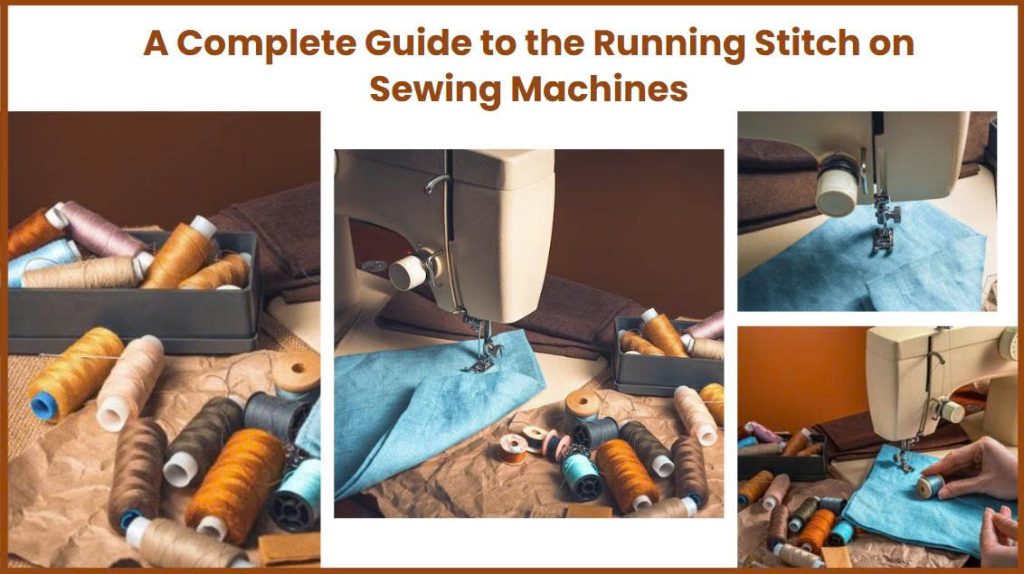Blog
A Complete Guide to the Running Stitch on Sewing Machines
The running stitch is one of the most fundamental and versatile stitches in both hand and machine sewing. Whether you’re repairing a tear, adding decorative detail, or tackling a craft project, mastering this simple stitch can greatly improve your sewing skills and efficiency.
In this guide, we’ll cover what a running stitch is, its appearance, whether it’s meant to be temporary or permanent, and how it differs from a straight stitch. You’ll also learn how to correctly thread a sewing machine to create a clean running stitch.
What Is a Running Stitch?
A running stitch is created by alternating small, even stitches with tiny gaps, producing a “dashed” effect on the fabric. This basic stitch can be made by hand or by machine, making it accessible for beginners and professionals alike.
When sewn on a machine, the running stitch is formed by the needle’s up-and-down motion as it passes the top thread through the fabric while the bobbin thread interlocks underneath. The result is a neat, uniform line of stitches visible on both sides of the fabric.
This stitch is commonly used for tasks such as basting, gathering fabric, or forming simple seams. By adjusting the stitch length, you can adapt the running stitch for practical or decorative purposes.
What Does a Running Stitch Look Like?
The running stitch is recognizable by its simple, repetitive pattern of stitches and spaces. On the surface of the fabric, the stitches appear as short, evenly spaced lines separated by gaps of similar size.
While hand-sewn running stitches may vary slightly in uniformity, machine-made running stitches are smooth and consistent thanks to the sewing machine’s built-in tension system, which balances the upper and lower threads.
Keep in mind that the stitch’s final look will depend on factors like the stitch length setting, the type of thread, and the texture of the fabric.
Is a Running Stitch Temporary or Permanent?
The running stitch can function as either a temporary or permanent stitch, depending on how it’s used:
Temporary Use (Basting):
Long running stitches are often used to hold fabric layers together temporarily before sewing a permanent seam. These longer stitches are easy to remove when no longer needed.
Permanent Use:
On lightweight fabrics or in decorative sewing, the running stitch can serve as a permanent stitch. It’s quick to apply and suitable for projects that don’t require heavy-duty seams, like hemming delicate fabric or adding trim.
How to Thread a Sewing Machine for a Running Stitch
Proper threading is essential to creating a neat and functional running stitch. Follow these steps to prepare your machine:
1. Prepare Your Tools
You’ll need:
2. Thread the Upper Thread
3. Insert and Thread the Bobbin
4. Adjust the Machine Settings
5. Bring Up the Bobbin Thread
Running Stitch vs Straight Stitch
Though similar in appearance, the running stitch and straight stitch serve different purposes:
- Straight Stitch:
Use: The go-to stitch for creating durable seams in garment construction and general sewing.
Appearance: A continuous line of stitches without gaps.
- Running Stitch:
Use: Often chosen for temporary holds (basting) or decorative detailing.
Appearance: A series of small stitches with evenly spaced gaps, resembling a dashed line.
Final Thoughts
The running stitch is a simple yet powerful tool in sewing, perfect for both beginners and seasoned sewists. Whether you use it as a temporary hold or as a decorative finish, mastering this stitch will expand your sewing capabilities.
By learning how to set up your sewing machine for a running stitch and understanding its differences from a straight stitch, you can confidently handle a variety of sewing tasks. With practice, you’ll be able to create clean, precise stitches every time.
For more tutorials and expert sewing tips, explore our blog to take your projects to the next level.

